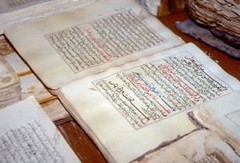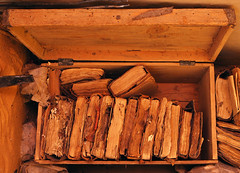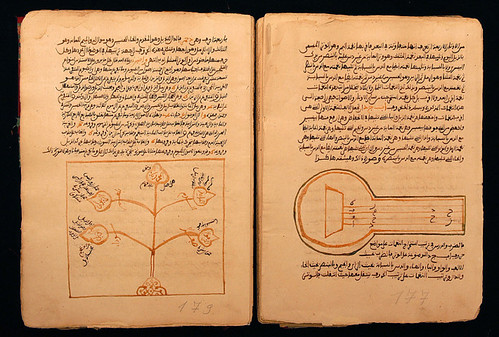THE SECRET OF TIMBUKTU'S MANUSCRIPT RESCUE
An army of coin-geek hating non-numismatists is heading to your town. How will you save your numismatic library? Take some tips from the town of Timbuktu, whose private bibliophiles have been protecting their ancient manuscripts for centuries. Here are a couple articles found via The Explorator newsletter. -Editor

Though armed Islamists have left their town, the grand old families of Timbuktu are still wary of revealing the secret of how they safeguarded thousands of ancient manuscripts from destruction by extremists.
Before they fled the fabled desert town in northern Mali at the end of January, the Islamists sacked part of the public Ahmed Baba Centre library, burning some 3,000 documents they considered sacrilegious.It was their second attempt to harm Timbuktu's rich cultural heritage, after destroying the mausoleums of 11 saints there in April last year. In mid-February, the UN cultural body UNESCO announced an action plan worth 10 million dollars (7.5 million euros) to restore the cultural heritage of northern Mali and preserve manuscripts that attest to the intellectual and spiritual flourishing of Timbuktu -- listed a world heritage site -- in the 15th and 16th centuries.Unlike the Ahmed Baba Centre, about 30 private libraries in the ancient town were spared by the Islamists.
For several months, their owners had dispersed their collections to put them in safe places, as their ancestors did in the past.When the Islamists entered Timbuktu last April, Ismael Diadie Haidara al-Quti, a descendant of Mali's imperial Askia family and of Ali al-Quti, a Visigoth from Toledo in Spain who converted to Islam, fled with his family and took a dozen manuscripts with him."We hid them among clothes and embarked on a boat to head down the river towards the south," said his wife Hawa Toure, manager of the Mahmud Kati (al-Quti) Fund, the main private library in Timbuktu, which keeps almost 13,000 recorded manuscripts."Afterwards, we looked for people who could help us, ordinary people who were not being watched. They bought caskets and keys. Some of them fled with the caskets by boat, others buried them in the sand."To read the complete article, see: Old families keep secret of Timbuktu's manuscripts(www.middle-east-online.com/english/?id=57274)Time Magazine has a photo spread about the saving of the libraries. -Editor

Beyond the reports of beatings, hand-choppings and other grim Shari’a punishments carried out in the ten months Islamists held the historic Malian city of Timbuktu, the fear that gripped many observers in the outside world was of what would happen to the contents of the city’s ancient libraries. As it was, an extremist, al-Qaeda-linked militia had already set about demolishing and desecrating many of Timbuktu’s UNESCO-recognized tombs of medieval saints—the puritanical brand of their faith was at odds with the syncretic, Sufi Islam that flourished in the Sahara at the apex of the Malian empire in the 14th and 15th centuries. The treasured libraries, whose manuscripts encompassed a vast eclectic realm of jurisprudence, astrology and other medieval African scholarship, were reportedly also in the line of fire.
But after a French-led offensive drove the Islamist militias out of Timbuktu and other northern Malian cities in January, it emerged that the vast bulk of Timbutku’s manuscripts—95% of them—were known to be intact. How? A clandestine operation, backed by the Netherlands’ Prince Claus Fund, had begun in October the stealthy ferreting away of folios and other precious volumes. The exact location of the archives is hidden, in case lingering extremist elements still seek their destruction. The following are undated images of what remains, to our knowledge, thankfully safe.
<center style="color: rgb(0, 0, 0); font-family: Georgia, Times, serif; font-size: medium; font-style: normal; font-variant: normal; font-weight: normal; letter-spacing: normal; line-height: normal; orphans: auto; text-indent: 0px; text-transform: none; white-space: normal; widows: auto; word-spacing: 0px; -webkit-text-stroke-width: 0px; background-color: rgb(254, 252, 233);">

</center>






